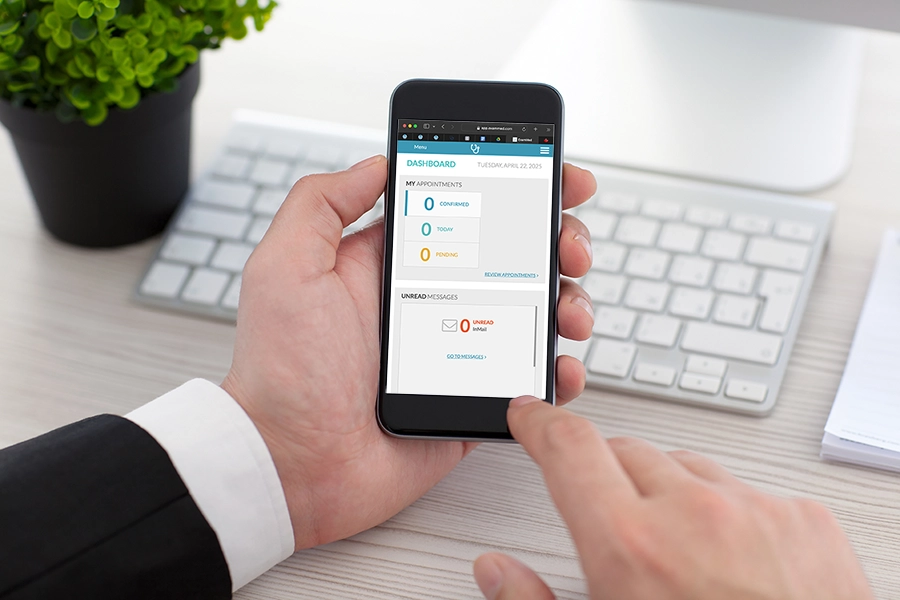Technology has done a great many things for the world—from computers that augment almost every aspect of our lives to vehicles that no longer rely on fossil fuels. It has transformed our lives in remarkable and often profound ways. But, as with any introduction of new technology, there are always unintended consequences. One of those thorns among the roses is the concept of “telehealth”.
Developers accelerated the telehealth concept out of necessity, but they implemented it in a fragmented and reactive way. The consequence has been an already complicated communication system between doctors and patients becoming further convoluted. Put simply, Telehealth has broken healthcare communication. And the reason it did might not be what most people expect.
When COVID-19 took the world by storm in early 2020, the healthcare system—along with nearly every other sector—rapidly adapted to a society that suddenly needed to function remotely. Remote work went from a perk to a requirement. And that fact wasn’t more apparent than in the delivery of healthcare. Suddenly, patients couldn’t just walk into clinics or hospitals. This fact created an immediate and urgent demand for a new method of connecting healthcare providers with patients.
That is where the concept of “telehealth” was born.
Solutions branded under the new communication method called “telehealth” flooded the market. Video conferencing platforms, virtual check-in apps, digital triage tools, and remote monitoring systems were rapidly developed, branded, and rolled out. The industry saw a digital gold rush. We know because ExamMed was among the pioneers, racing to build tools that could bridge the gap between doctor and patient in a socially distanced world. In many ways, this quick pivot was impressive and even lifesaving during the height of the pandemic. However, once the crisis diminished, it was apparent something was off.

And that is the moment telehealth broke healthcare communication.
Telehealth tried to redefine what it meant to “communicate” in a medical setting. People positioned telehealth as a wholly separate and unique form of interaction, rather than viewing it as an extension or enhancement of traditional doctor-patient communication. This subtle definition had a dramatic impact. It encouraged doctors, patients, and the systems that connect them to treat telehealth as an entirely different process, rather than what it truly is: a tool.
This change in perception has led to a troubling misalignment. Instead of enhancing communication, telehealth has inadvertently created new gaps while exaggerating old ones. All founded on a core misconception that communicating with patients remotely needed a different train of thought.
Doctors were led to believe that how they interacted with patients would need to be different depending upon the patient’s location. Patients, too, were led to believe their interactions would be different. In both cases they were led to believe those interactions had to be different. This often led to rushed appointments, impersonal exchanges, and confusion about follow-up steps or treatment plans.
All this because no one considered the bigger picture.
The core issue lies in how we define and treat remote patient communication. If we continue to treat it as a standalone solution—as something distinct from the regular doctor-patient relationship i.e. “telehealth”—we are simply further complicating the system. We should note that this system lies at the heart of healthcare. Communication.
Communication can make Healthcare amazing or horrible.
In a recently updated survey done in 2016, long before COVID, CRICO Strategies investigated 23,00 medical malpractice lawsuits and determined almost one third of them could be directly contributed to a communication breakdown. Stepping back and looking at the communication system is where Healthcare should be moving. Not trying to reinvent the wheel.
This means designing platforms that don’t just connect doctors to patients, but supports meaningful, patient-centered communication. It means creating solutions that are simple and easy to use for all parties involved. We as an industry have to move past the build it fast and break it often that technology so easily falls into. We need to create solutions that play nicely with each other and provide tools that augment the overall experience. Not make it more complicated.
“Telehealth” as a concept has further broken a system that already had significant issues. If we can realign our approach, there’s still a chance to repair communication gaps and create a better, more connected future for healthcare—one where the screen enhances the relationship between doctor and patient rather than becoming a wall between them.




Leave a Reply